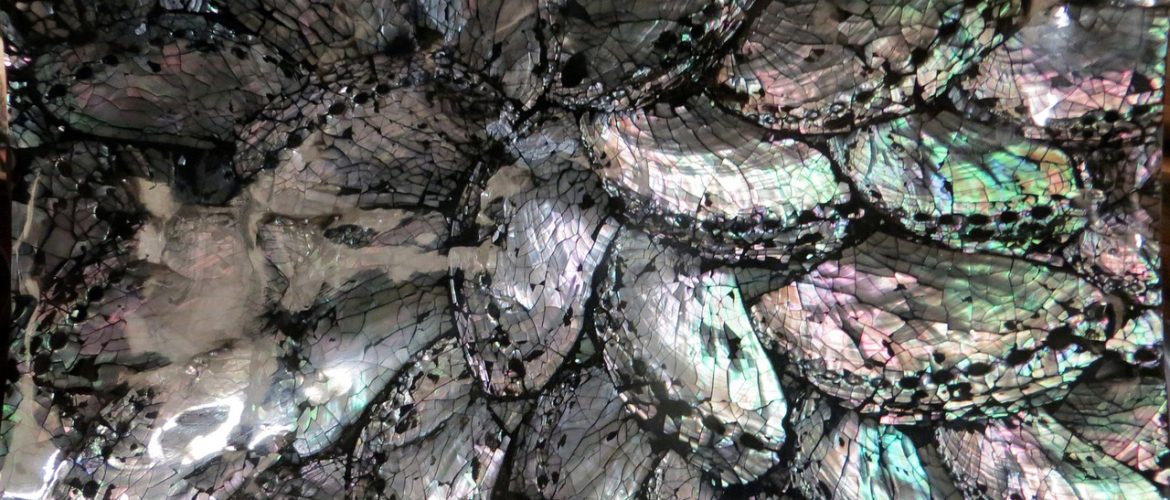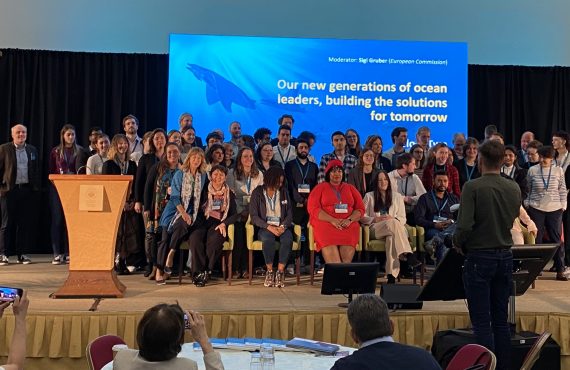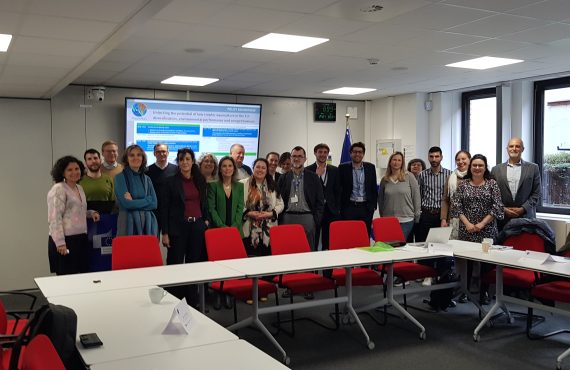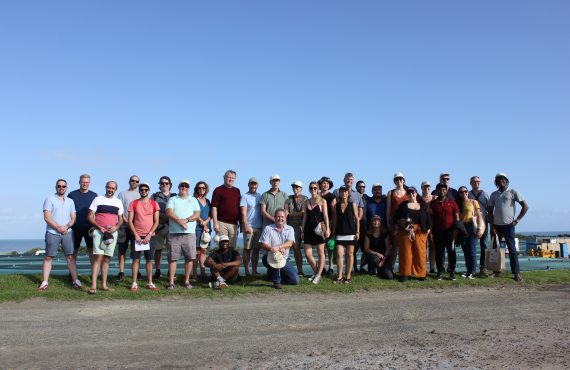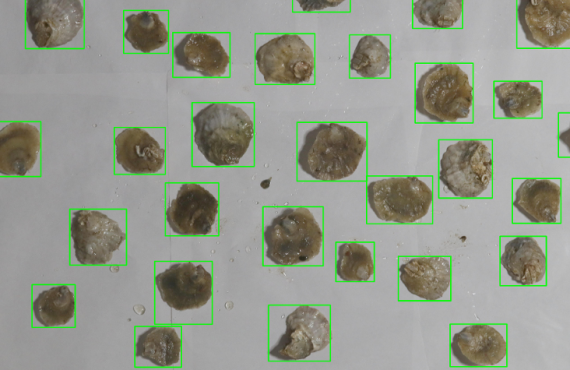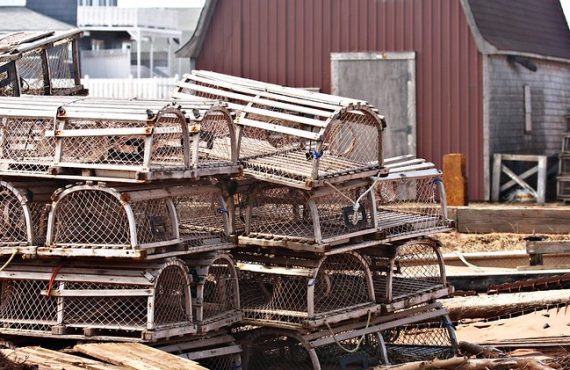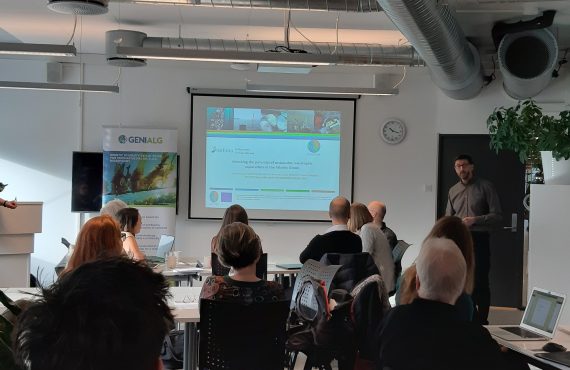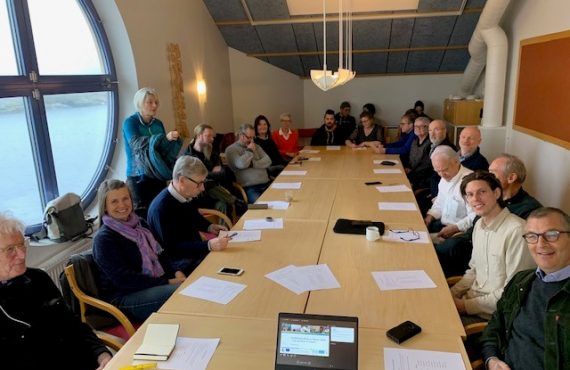Abalone shells, a low-trophic species from the Atlantic Ocean
By Ben Opara, masters’ degree in Marine Biotechnology from UIT
Aquaculture is one of the fastest-growing food production sectors whose growth is expected to continue in the coming decades. However, and considering climate change, it is crucial that the sector is developed with the best practices in order to fight, even reduce, the environmental problems the world faces these days. Low-trophic aquaculture has shown that mitigation. In fact, various studies are proving the positive results of the utilization of the lowest species of the food chain in the sector. Even though many abalone producers rely on formulated feed, the natural food of abalone, a low-trophic species, is macroalgae. That is why some tests are analysing its results and the positive impact their use has for the planet.
Morever, Integrated Multi-trophic Aquaculture (IMTA) promises ecological and socio-economic advantages that include the provision of sustainable aquaculture feed. In my master’s thesis at the Arctic University of Norway (UiT), I compared the biochemical composition of juvenile European abalone, Haliotis tuberculata coccinea, that were cultivated under three different diet regimens. The first group was abalone fed with macroalgae produced in an IMTA system; the second one isabalone fed with a formulated diet derived from fishmeal and fish oil; and the last one, abalone fed with a hybrid diet of the IMTA-macroalgae and the formulated feed.

Abalone fed in an IMTA system with algae
What is IMTA?
Integrated Multi-trophic Aquaculture entails synergistic cultivation of species that belong to different trophic levels. IMTA involves the integrated cultivation of a fed species (e.g., finfish) alongside a lower trophic level extractive species (marine invertebrates and/or macroalgae) that feed on organic and inorganic wastes from the fed species. The benefits of this system include mitigation of the impact of excess nutrients released from aquaculture water and diversification of aquaculture products. In short, IMTA reduces environmental impact making aquaculture sustainable.
Abalone aquaculture
Abalone is a luxury seafood that is quite popular in East Asian countries such as China, Japan and Korea. A unique umami taste and a fanciful shell lined with ‘mother-of-pearl’ make them highly desirable on the plate. Due to its high market value, unreported and unregulated harvesting persisted in many places. Consequently, most abalone stocks collapsed and failed to recover for decades. Today, over 95 percent of abalone comes from aquaculture production mostly in East Asia. With the impending commercialization of the European abalone, H. tuberculata coccinea, production in Europe is expected to increase in the coming years. This makes the need to obtain a more sustainable abalone feed even more urgently.

Comparing results in the laboratory from different feeds for the abalone
Macroalgae produced in IMTA vs formulated diets
Results from my study showed that the juvenile abalone fed with macroalgae produced in an IMTA system had higher protein and fat content than the other groups. One of the reasons why this occurs may be that the animals were able to digest proteins in the macroalgae better than the ones from the formulated diets. Also, previous studies have shown that the protein content of macroalgae is significantly enhanced when they are cultivated in nutrient-rich waters such as in the IMTA system.
The abalone that was fed with the macroalgae diet had a relatively higher proportion of the healthy polyunsaturated fatty acids, also Known as omega-3 and omega-6, than the abalone fed by the formulated diet. However, the highest amount of polyunsaturated fatty acids was found in the abalone fed with the hybrid diet.
Even though the omega-6 to the omega-3 ratio for the artificial diet group was lower than the other groups, the ratio across all diet groups was balanced and below one. A diet high in omega-6 but low in omega-3 increases inflammation, while a diet that includes balanced amounts of each type reduces inflammation, among other benefits.
The future of abalone feed
Macroalgae is the natural food of abalone and it can ideally be used as a supplement if not as a full replacement for the formulated feed widely used in abalone aquaculture today. However, the reality is that it may not be a cheaper alternative for many abalone producers. Hence future research effort is needed to understand practical solutions that will make macroalgae cultivation and harvesting within the IMTA framework a common practice.



